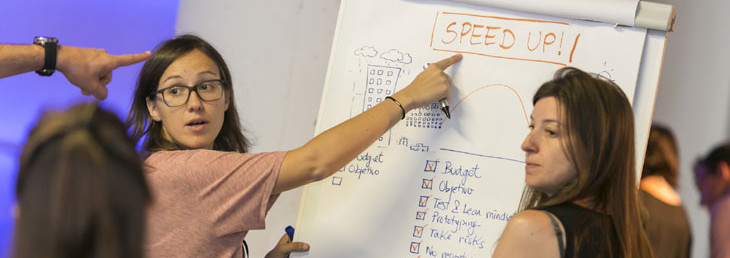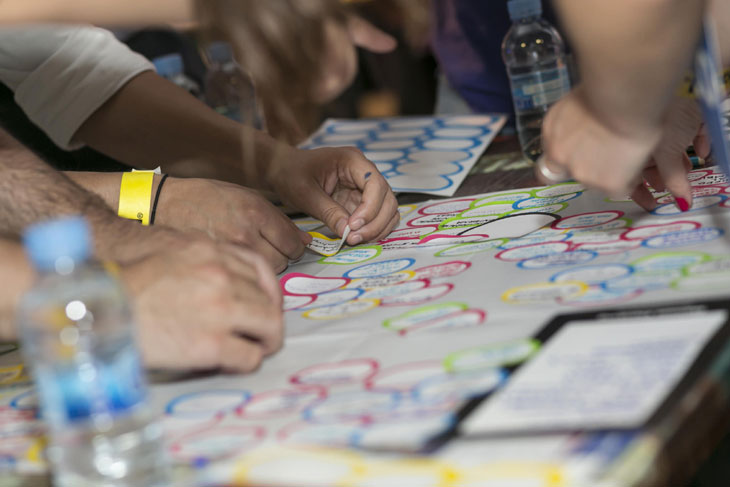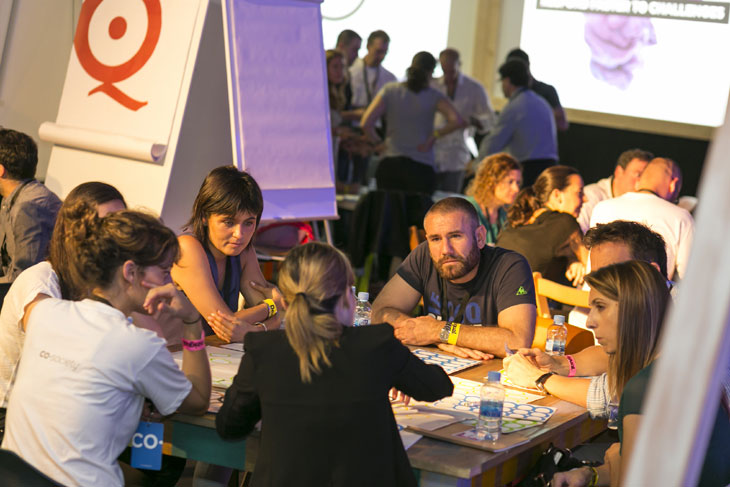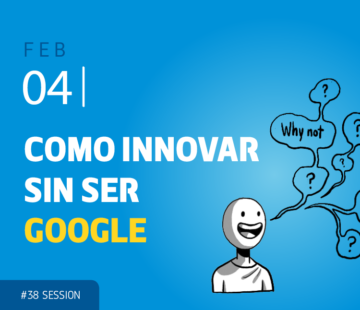Co-Fest 2015 (I): Learning by doing to become more responsive organizations

A majority of businesses work according to a base of structures, methods and processes that were designed over a century and a half ago. Hierarchical systems of decision-making and control; departments and compartmentalised functions; tasks and techniques that prioritise routine. A model conceived for the challenges and opportunities of the industrial age, for environments that are slow to evolve and moderately predictable.
This type of environments are now becoming a thing of the past. The rhythm of change is accelerating. The future – even in the short and medium term – is far less predictable. And inevitably, the old model is failing. The solution is presented by a new type of organisation, the Responsive Organisation: sensitive to their environment, with the capacity to react and respond rapidly to the situation around them of accelerated change (technology, markets, people, etc). These organisations support the open flow of information, encourage experimentation and learning in rapid cycles, and organise themselves as a network of employees, clients and members, all motivated by a common purpose.
The objective of Co-Fest 2015 was to learn how to be more responsive. Using a hands-on approach, in an accelerated process of ideation and of prototyping ideas and initiatives to make our organisations more responsive. And what could be more inspiring than the Mediterranean just a few yards from the headquarters of Barcelona company Desigual, our host for the occasion.
Learning by doing workshops
The best way to learn how to be more responsive is to rethink our organisation to be able to respond to opportunities and challenges around us more quickly. The Co-Fest 2015 programme was structured around a series of practical workshops with the aim of designing initiatives to make us more responsive. A collaborative effort from groups of 6 or 7 people representing companies form different sectors. A task for defining ideas that would then have to be prototyped and presented to the other participants in a plenary session.
But first the participants faced an individual task, to be undertaken using the Manual Thinking tool. A time to think and to write down actions and concepts on sticky labels, categorising them into three colours. Green for the ones that are already helping our organisation to be reactive. Red for an obstacle or a direct impediment to that objective. Yellow for any that we have seen in other companies. Later, a fourth colour is brought unexpectedly into the mix: blue, for having changed an “I can’t because…” mentality to an “I can if…” attitude, for writing down ideas and initiatives that we could implement to counteract the red labels and make any supposed impediment immaterial.

Prototyping ideas
Following the individual task it was time to start working in teams. First all the different coloured labels are gathered together and displayed on a board where they can be repositioned in order to reconfigure, once or more than once, associations and relationships between them.
The result is a map of ideas, some of which end up being linked by themes, problems or solutions. An organisation of concepts that will help find the inspiration necessary for the next step, which was choosing a couple of initiatives or projects that could make a company into a more responsive organisation. And once these are decided, the teams could begin to shape the idea, and give it form on paper as a proposal of value, organised using the NabcH tool, to determine what focus or specific form it will have, the specific gap it will fill, and which differential or increased-value elements it will offer over other similar and existing options.
A last step in forming the ideas included prototyping the proposed concepts to make them tangible. In this case, the principal objective of the increased materialisation was its communication to the other participants. Our imagination was a major part of the process, with the materials, tools and time we used, as was proved in the presentations of ideas at the culminating Co-Fest plenary session.

